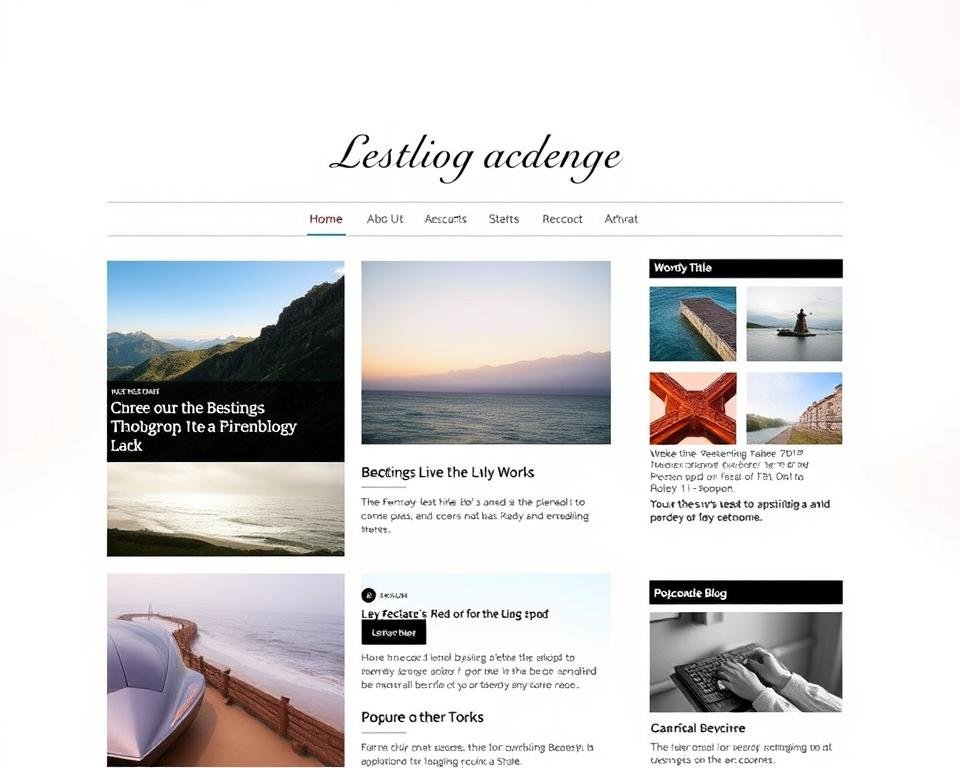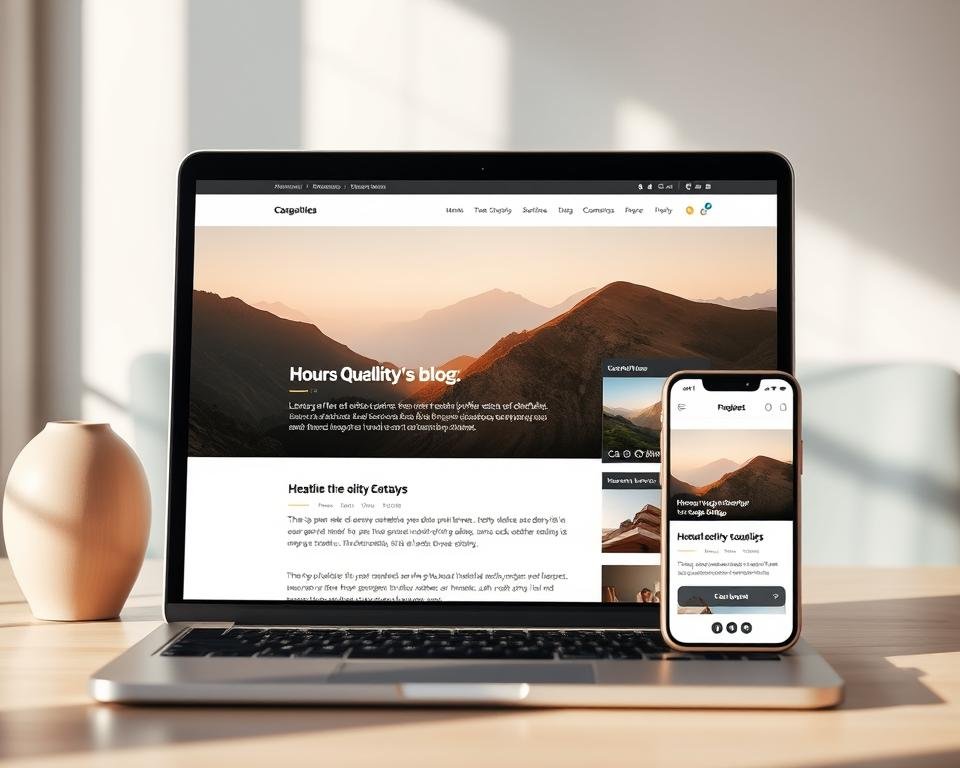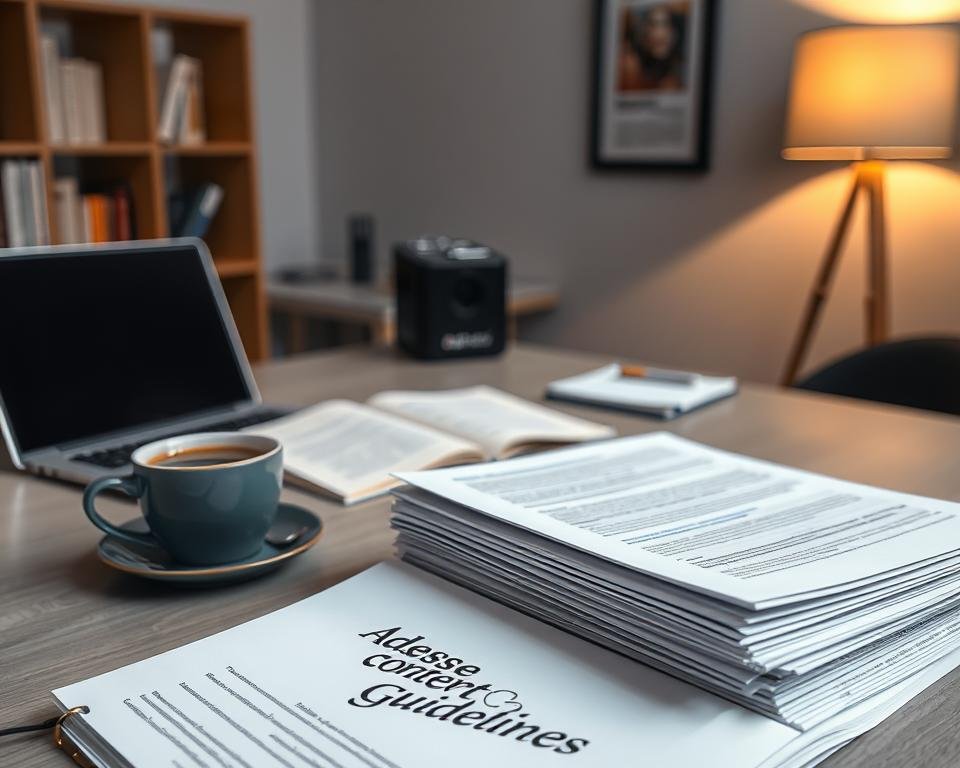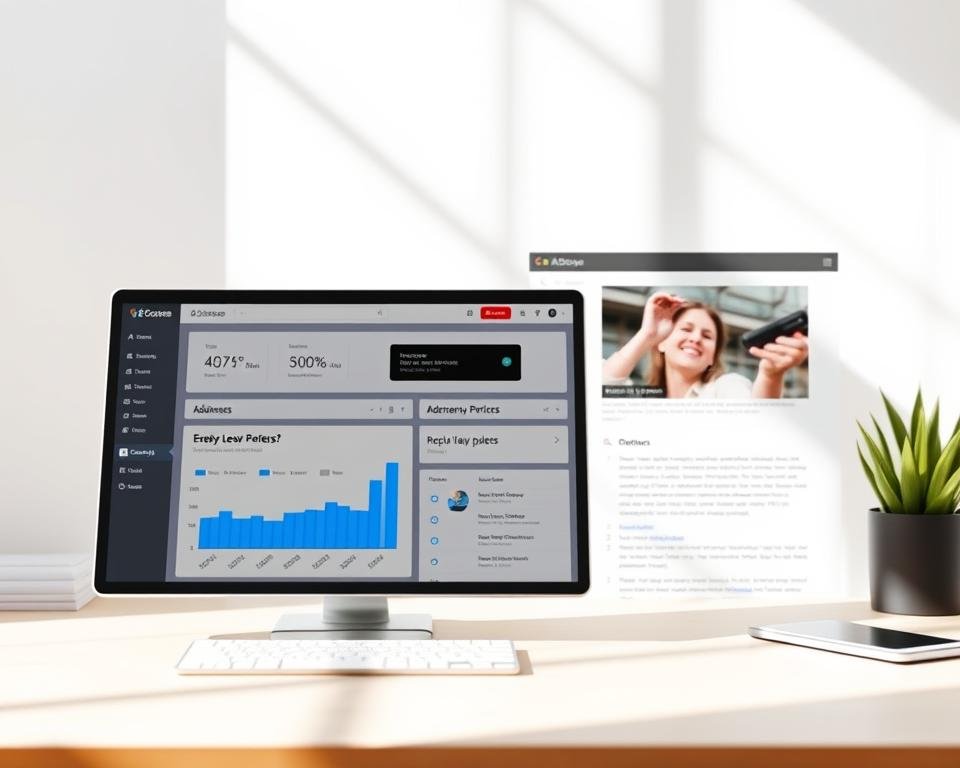Starting my blogging journey, I know it’s key to follow AdSense rules. This lets me make money from my blog and keeps my site professional and trustworthy.
It’s important to know AdSense rules to make more money. By picking a good niche and making my site easy to use, I draw in and keep my readers.
Also, making great content is a must. This way, my blog is well-made and ready to make money.
Key Takeaways
- Understand AdSense guidelines to ensure compliance.
- Choose a relevant niche to attract your target audience.
- Design a clean and user-friendly blog layout.
- Create high-quality, engaging content.
- Optimize your blog for better monetization opportunities.
Understand AdSense Policies and Guidelines
To succeed with AdSense, knowing the rules is key. As a blogger, it’s vital to understand the AdSense program’s policies.
Importance of Compliance
Following AdSense policies is essential for a profitable blog. It keeps my content valuable and my account safe from trouble.
Key benefits of compliance include:
- Maintaining a positive user experience
- Avoiding account penalties
- Ensuring ad relevance and quality
Common Policy Violations
Knowing common mistakes helps avoid trouble with AdSense. Some common errors include:
| Policy Violation | Description |
|---|---|
| Clicking on your own ads | Artificially inflating ad revenue by clicking on your own ads is against AdSense policy. |
| Placing ads on prohibited content | Ads should not be placed on content that violates Google’s policies, such as adult content or copyrighted material. |
| Using unauthorized ad code modifications | Modifying ad code without permission can lead to account suspension. |
Resources for Reference
To keep up with AdSense rules, I can use these resources:
- Google AdSense Help Center
- AdSense Policy Center
- Google Webmaster Guidelines
By checking these resources often, I can make sure my blog meets AdSense standards. This keeps my readers happy and engaged.
Choose a Relevant Niche
Choosing the right niche is key to a successful blog. It meets AdSense policies and keeps readers interested. A clear niche means your content is targeted and valuable.
I look at several things when picking a niche. These include audience interest, competition, and how it can make money. A focused topic lets me create content that meets my readers’ needs.
Importance of a Focused Topic
A focused topic is important. It helps you become an expert in your area. This builds trust and loyalty with your readers.
It also helps with search engine optimization. You can use specific keywords related to your niche. For example, if your niche is “blog layout optimization,” you can write about making blogs easy to use. This attracts the right kind of traffic and improves the user experience.

Evaluating Niche Viability
To check if a niche works, I look at a few things. First, I see how much people talk about it online. This includes social media, forums, and comments. If people are actively discussing it, it’s a good sign.
- Audience engagement metrics
- Competition analysis
- Monetization chances through AdSense and other ways
I also check out the competition. I use tools like Google Trends and keyword planners. They show me what topics are popular and profitable.
By looking at these factors, I can tell if a niche is good for the long run. It must be relevant and follow AdSense rules.
Design a Clean and User-Friendly Layout
To make my blog better for AdSense, I need to focus on a clean layout. A well-organized blog makes reading easier and follows AdSense rules.
A clean layout means easy navigation. This lets readers find what they want quickly. I can do this with clear categories, simple headings, and a straightforward menu.
Importance of Navigation
Intuitive navigation is key for a good user experience. It helps readers find what they need fast, which keeps them on the site longer. To make this happen, I should label my menu items clearly and keep my blog’s structure simple.
- Use clear categories and subcategories
- Implement a simple and consistent menu
- Use a search function to help readers find specific content
Using Responsive Design
Responsive design is vital for making my blog work on all devices. Most people use mobiles to browse the web. So, my blog needs to adjust to different screen sizes for the best reading experience.
To use responsive design, I should:
- Use flexible grids and layouts
- Optimize images for different screen sizes
- Test my blog on various devices to ensure compatibility

By focusing on a clean and easy-to-use layout, I can make my blog better. This will help me keep readers engaged and follow AdSense rules.
Create Quality Content
Making quality content that follows AdSense rules is key for a good blog. I aim to create content that draws in readers and meets AdSense standards. It must be engaging and original.
Originality and Authenticity
To make sure my content is unique and real, I must avoid plagiarism. I do this by doing deep research and using trusted sources. This way, I follow AdSense rules and gain my readers’ trust.

Adherence to Content Guidelines
AdSense has clear rules for content. It bans misleading, explicit, or illegal content. I make sure my content is family-friendly and true.
It’s important to check AdSense’s content rules often. Policies can change. Keeping up helps me keep my content in line.
Optimizing for Engagement
To get more engagement, I need to know my audience well. I make content that speaks to them. This means using compelling headlines, making content easy to read, and adding multimedia.
- Use subheadings to break up content
- Incorporate internal and external linking
- Encourage interaction through comments and social sharing
By using these methods, I can get more people to engage with my blog. This could help my blog do better on AdSense.
Implement Proper Advertising Placement
To follow AdSense rules and make more money, it’s key to place ads right. Good ad placement meets rules and keeps your site clean and easy to use.

Understanding Ad Formats
AdSense has many ad types, like display ads, link units, and native ads. Knowing these is vital for picking the best ads for your blog. Display ads are visual, like images or videos. Link units are links to more content. Native ads look like your blog’s content.
Think about your blog’s layout and content when picking ads. For example, native ads work well with lots of text, blending in smoothly.
How Many Ads to Use
Deciding how many ads to use is important. AdSense says not to overdo it. A good idea is to keep ads to a few per page, so your content stays the main focus.
- Put ads in spots that are easy to see but don’t block your content.
- Don’t put too many ads in one place, as it can be too much.
- Make sure your ads follow AdSense rules, like not on error pages or with little content.
By picking the right ad types and numbers, you can make your AdSense strategy better. This will improve your blog’s look and earnings.
Optimize Your Blog for SEO
A well-optimized blog is key for better search rankings and more AdSense money. To do this, I’ll focus on several important SEO strategies.
Importance of Keywords
Keywords are vital for SEO. They help search engines know what my blog is about. I’ll do deep keyword research to find the right terms, like “blog layout optimization” and “optimizing blog for AdSense.”
Best practices for keyword usage include:
- Use keywords naturally in your content
- Avoid stuffing keywords
- Use long-tail keywords for specific topics
Crafting SEO-Friendly Headlines
Writing good headlines is key for grabbing attention. A great headline should be short, informative, and include the right keywords.
Tips for creating effective headlines:
- Keep it short and to the point
- Use action verbs and questions
- Include the target keywords
Internal and External Linking
Linking inside and outside your blog is important for SEO. Internal links help users find their way and improve the site. External links add credibility by linking to trusted sources.
Benefits of internal and external linking:
- Improved user experience
- Enhanced credibility
- Better search engine crawling and indexing

By using these SEO strategies, I can make my blog more visible. This will bring in more traffic and possibly more AdSense money. Keeping up with SEO updates will help me follow AdSense rules and stay ahead of search engine changes.
Foster a Positive User Experience
To make my blog great, I need to focus on a few key things. These things help my blog follow Google AdSense rules and keep readers coming back.
A good user experience is key to keeping readers. It makes sure my blog is easy to use and fun to read. I work on making my blog better for my readers.
Page Load Speed
Page load speed is very important. A slow page can make people leave quickly. This can hurt my AdSense money. To make pages load faster, I can:
- Use image compression to make images smaller without losing quality.
- Minify CSS and JavaScript files to load less code.
- Leverage browser caching to keep often-used things on devices.

Mobile Optimization
Most people use mobile devices to surf the web. So, my blog must be easy to use on phones. I can do this by:
- Using a responsive design that works on all devices.
- Testing my blog on different phones to make sure it works well.
- Optimizing content for phones, like using short headings and easy-to-click buttons.
Avoiding Pop-ups
Pop-ups can ruin the experience and break AdSense rules. To avoid this, I should:
- Only use pop-ups when really needed and make them not too annoying.
- Make sure pop-ups can be closed easily and don’t block the main content.
- Listen to what users say about pop-ups and change my ways if needed.
By working on these areas, I can make my blog a better place. It will follow AdSense rules and keep readers happy and coming back.
Regular Updates and Maintenance
Keeping a blog updated and maintained is key to its success and following AdSense rules. It means making sure the content is fresh and interesting. Also, it’s important to follow AdSense policies as they change.
Importance of Fresh Content
Fresh content keeps readers coming back. By adding new and relevant posts, I make my blog better for users. This also helps search engines see my blog as valuable.
Posting quality content often keeps me ahead of others. It’s important to find the right balance. This way, I keep my readers interested without overwhelming them.

Regularly Reviewing Policies
AdSense rules can change, and I need to know about these updates. Checking AdSense policies often helps me stay in line. This lowers the risk of losing my account.
- Stay updated with the latest AdSense policy changes.
- Adjust my blog’s content and ad placement strategies.
- Make sure my website follows the latest AdSense guidelines.
This way, I keep my website structure for AdSense up to date. It helps my blog succeed in the long run.
Measure and Analyze Performance
To make more money from AdSense, I need to check my blog’s performance often. This helps me find what’s not working and fix it. I use this info to make my content and ads better, following AdSense rules.
Leveraging Analytics Tools
Google Analytics gives me deep insights into my readers. It shows me what they like and what they don’t. This way, I can see how to make more money and keep my readers happy.
Data-Driven Decision Making
Analytics tools help me make smart choices for my blog. I can change my content to match what my readers want. And I can place ads better to earn more, all while following AdSense rules.
